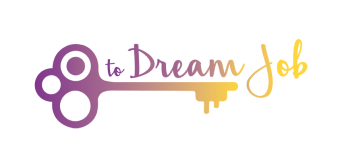Did you know that the four ikigai circles – passion, profession, mission, and vocation – can be of enormous help when it comes to crafting your dream job?
In this blog post I’m sharing a concept helpful for people who feel disengaged or stuck in their current role (or career) but can’t quit right now for some reason or another. I will cover:
- What is job-crafting
- Job-crafting using ikigai
- How do I begin job-crafting
- How to approach your manager about crafting your role
- Ikigai check for crafting your ideal role

What IS job-crafting, anyway?
It’s a solid, tried-and-tested approach for anyone who feels stuck and unhappy in their job, but don’t necessarily want to change their entire career…
…which is the very position I found myself in not so long ago!
Job-crafting is all about making small yet purposeful changesto the tasks and relationships that make up your role, or your perspectives (such as the value or purpose of your day-to-day work). You can use the four ikigai circles to help monitor your progress along the way, so that you can thrive in your current job or look around for a change.
The great news is that if you do look for a change, the job-crafting process means that you will be much more likely to find a role:
· that feels personally fulfilling,
· that other people need,
· that uses skills you are good at, AND
· that you can monetise!
That all sounds wonderful. But how do I begin job-crafting?
First, you have to know what it is you want to change.
Yes, I know that seems easier said than done, especially when you’re struggling with the exhausting demands of your job! But you can make a simple start by narrowing down the different elements of your role, and thinking about how they make you feel.
So, you could think about:
· the people you work with (colleagues, customers, manager or stakeholders),
· the purpose of your work,
· the company culture,
· the specific tasks you do each day.
And then start by asking yourself questions such as:
· What aspects really light you up?
· Which tasks would you like to do more of, and which would you eliminate?
· Where could you best apply your strengths?
Questions and considerations like these will take you from a generic: “I don’t like my job” to a specific: “This is what I need to change, in order to feel happy and fulfilled”.
If you DON’T do this, you risk repeating the cycle of dissatisfaction.
As in: you change your job, but without really understanding what made you unhappy about the previous one. So you remain dissatisfied.
Now here’s the million-dollar question! How can I do more of what I enjoy, and less of what I don’t?
OK. Let’s say you enjoy writing and would like to write more… but writing isn’t a big part of your current job.
Now you know what you’d like to do more of, you can start looking around for opportunities within your company. Could you help the marketing team with some copywriting, or write a promotional article, for example?
Once you have identified some areas that use your skills AND help the company, it’s time to ask for the support of your manager.
I won’t lie: this might be a challenge. But if you’ve done the groundwork of identifying areas that use your skills AND how you can help the company, the conversation should flow much more easily.
Be sure to explain two important things:
1. Your personal reason behind this request.
2. If you develop your strengths in certain areas, the results won’t just benefit you, but the company.
If you feel uncomfortable about talking to your manager, think of job-crafting as a win-win situation. By allowing you to flex your skills and learn more, you will be a more engaged and effective employee. Meanwhile, the company can promote itself as a true learning organisation, where people are listened to and able to develop.
Here’s a warning, though. Try not to fall into the trap of agreeing to just take a training course, without also having a plan to show how you will actually use the new skills you’ve learned.
IMPORTANT: expect job-crafting to be an ongoing process of discovery, trial and error.
From my work as a coach, I have seen many people make the same mistake. They want to shorten the discovery period, because they are too eager to find an immediate solution.
The problem with this approach is that, again, you can find yourself jumping from job to job, getting more and more frustrated every time. Most of us have had flashes of career inspiration, or an “a-ha!” moment, only to find that the idea sounded better in our heads than it did in real life – and then we’re right back where we started.
But by playing around with different ideas and not getting too attached to any of them, you will grow in confidence and give yourself time and space to see what works (and what doesn’t!)
So, when you speak to your manager, ask for or suggest a specific assignment to work on, with a clear time frame.
That way, if you don’t enjoy the work as much as you thought you would, you haven’t made a commitment that you can’t get out of.
But if you do enjoy it and are good at it, the chances are very high that you will be asked to do some more!
OK, so remind me – where does ikigai feature in all of this?
The intersection between the four ikigai circles (passion, profession, mission, and vocation) is your job-crafting sweet spot. You could see it as your ‘North Star’, guiding you towards work that makes you happy and fulfilled.
So, when you identify those new tasks or groups of people, remember to check the following:
1. Does the new task feel exciting to you?
2. Is it going to help you further build or develop your strengths?
3. Is it something that the company – or your colleagues or customers – need right now?
4. Will the task add value, such as increasing income or saving money and time?
If you feel overwhelmed or not really sure how to apply this concept in your current role, I can help. Visit my website to learn more about the Ikigai Scan, and how finding your ikigai could change your life. If you have any burning questions, please get in touch!
Author: AdriAna Kosovska
I work with women in 30s and 40s to help them find and thrive in their dream career so their career not only looks good on the outside but also feels great inside.
Certified coach, founder of ZERO TO DREAM JOB and TALENTED WOMAN



Comments